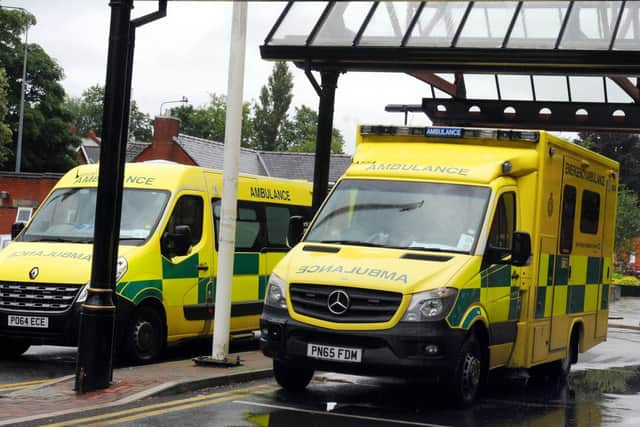Long waits at Wigan Infirmary's A&E unit as Covid-19 continues to take its toll
and live on Freeview channel 276
New data revealed by NHS England shows 9,131 people sought care in November at Wigan Infirmary’s A&E unit and Leigh Walk-In Centre, which are both run by Wrightington, Wigan and Leigh Teaching Hospitals NHS Foundation Trust.
This was down 25 per cent from 12,289 attendances in the same month in 2019.
Advertisement
Hide AdAdvertisement
Hide AdWhile the A&E department saw a fall of 10 per cent in the number of people attending, from 7.506 to 6,742, there was a huge 50 per cent drop in attendances at the walk-in centre in Leigh, from 4,783 to 2,389.


But these figures were only slightly lower than October, perhaps mirroring a national picture of people staying away from A&Es due to coronavirus.
Once at one the borough’s units, 73.4 per cent of patients were admitted, transferred or discharged within the target time of four hours: well below the performance across England of 83.8 per cent and a fall from 78.2 per cent in November last year.
At Wigan A&E, 64.1 per cent of people were seen in four hours, similar to last year’s 64.8 per cent, and it was 99.7 per cent at the walk-in centre, rising from 99.1 per cent.
Advertisement
Hide AdAdvertisement
Hide AdBut more people faced lengthy waits for a hospital bed after the decision to admit them was made - 980 waited more than four hours and 127 had to wait for more than 12 hours. Last November 902 people had to wait for four hours, while just six faced a 12-hour wait.
The long waits come as the trust has seen a significant increase in the number of acutely ill patients since March, due to Covid-19 and other life-threatening or urgent conditions.
A trust spokesman said: “In response to the pandemic, we put robust plans in place to ensure the safety of our patients remains a priority including changing wards in line with infection prevention control guidance, which has resulted in less capacity. This is set against a backdrop of WWL already having a low bed base in comparison with its population size.
“Infection prevention guidance has also had an impact on how we discharge patients safely and appropriately to the care home sector. Finally, regular staff testing and rising rates of community infections have led to more Covid-19 positive staff being identified and isolating, impacting on staffing pressures.”
Thanks for reading. If you value what we do and are able to support us, a digital subscription is just £1 for your first month. Try us today by clicking here